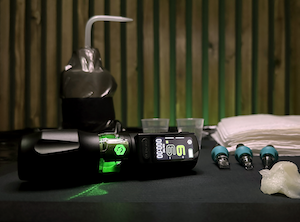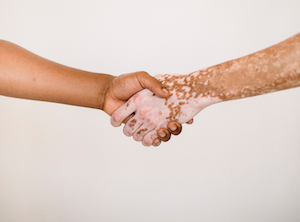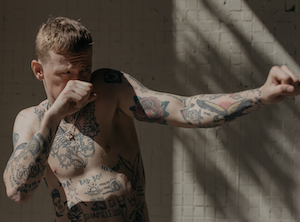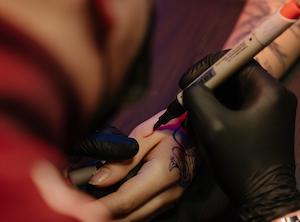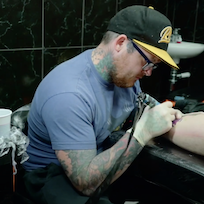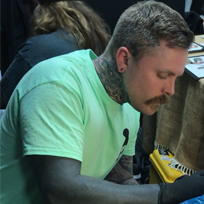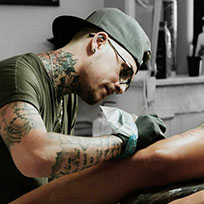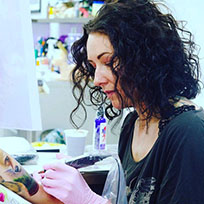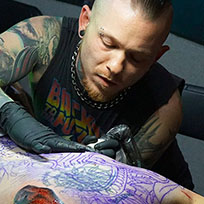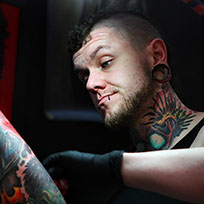Asking how to design a tattoo sleeve can be a bit like asking how long a piece of string is. It isn’t exactly simple. It’s a lot more complex and requires more planning than a single design, and when you’re starting out as an artist, it can be quite a daunting project.
It will get easier with experience, but we still appreciate the difficulty of a sleeve. There isn’t an easy one-size-fits-all sleeve tattoo template to follow, so we spoke to some experienced tattoo artists to get some insider tips and help on things to consider when designing your first sleeve.
Existing Tattoos
Finding out if a client has any existing tattoos is a good starting point. You’ll want to understand whether you’re fitting a design around existing work or whether you’re working on a cover up(s).
Asking for a picture is one way to do this, but if the location allows it, our advice would be to ask the client to come into the studio so you can get a better and clearer understanding. We do appreciate some studios are quite difficult for clients to get to, so in that case, a picture is much better than nothing.
Arm Size
As with existing tattoos, the best way to get an accurate understanding of the size of the arm you’ll be working on is by asking the client to come into your studio. A picture will suffice, but it won’t be as accurate.
The reason this is so important is because the size of the arm will affect a lot when designing a tattoo sleeve template. It will affect how long the actual work will take and the detail which goes into the design. You certainly don’t want to be caught out by a 20-stone weightlifter whose arm is twice the size of a more slender man or woman.
Design
This leads us nicely onto our next point – the design. What does the client actually want? Will they want one whole image? Or multiple designs/images to make up a sleeve? This is something to discuss in a good amount of detail as obviously, it’s the bones of the piece.
We asked one artist what he’d recommend for a client who wants a tattoo in pieces. He said “Build as you go, one piece at a time. Say an inner forearm one session, the top outer arm the next and so on. You still need to have an idea of the whole piece, but you don’t need to have planned everything out exactly as things can change”.
With a whole piece however, it’s better to plan ahead, ensuring the design has been thought out properly to fit the arm perfectly.
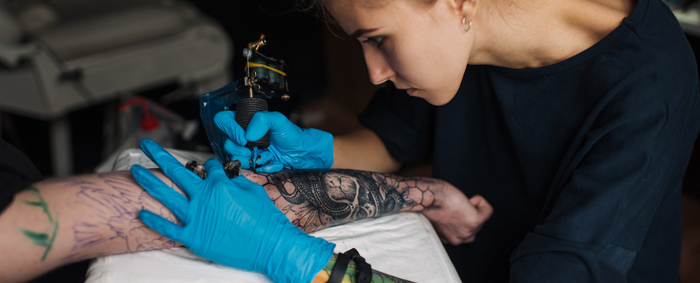
Positioning
One of the most significant things to consider is how the sleeve is going to wrap around the arm, so, positioning is key.
Artists should bear in mind every part of the arm and how it will look in a certain space. Ask yourself how much filler will be needed around the images and how you’ll avoid dead space. Also, how much will be free handed and how much will be stencilled? This is dependant on the artist; some will freehand an entire sleeve but that kind of confidence tends to come with years of experience.
And, just when you think it can’t get more complicated… you’ll need to think about the design when the arm is in different positions. For example, an image such as a front facing portrait could look one way while the client’s arm is down, however, when the arm is up or out, the positioning of the design can completely change.
Traditionally, the focal points of the design face forward, the same way the customer is facing, but it’s a very good idea to test the positioning out when planning the design. You can do this by stencilling the design onto the arm and having the client move around to see if they’re happy.
You’ll also need to consider how the design will wrap around the arm – the outer edges of your stencil might end up touching each other. Does the design still make sense if they do?
Sessions
It helps to think about how many sessions you’ll do the sleeve in. Sometimes, this just can’t be predicted – depending on the client’s pain threshold. The wrist, the ditch of the elbow and the inner arm tend to be the most difficult areas to tattoo for clients, or to be more precise, most painful.
One tattoo artist we spoke to said “If one thing, ideally line in one go. Potentially leave some spaces due to sensitivity”.
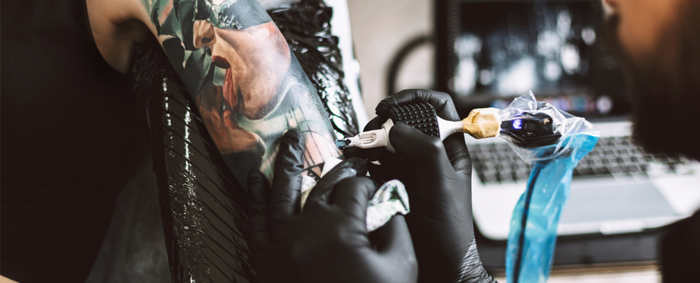
At the end of the day, every sleeve will be different. An artist’s style, client’s taste, the size of the arm and how long a person can sit for will all affect the outcome, but that’s all part of the experience. And, what better way to develop your skills than by creating the ultimate tattoo sleeve.













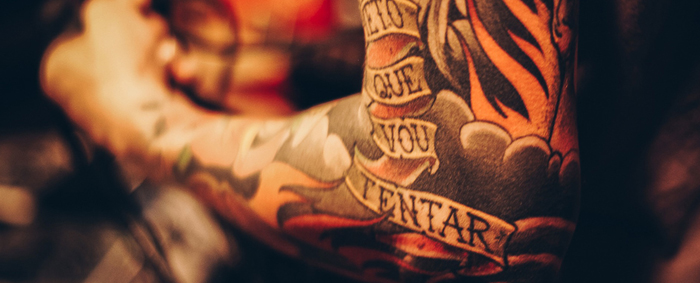
 What Is A Prince Albert Piercing?
What Is A Prince Albert Piercing?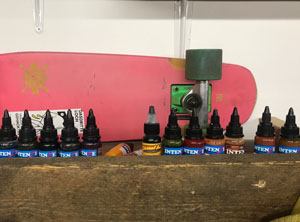 The Best Tattoo Ink 2024
The Best Tattoo Ink 2024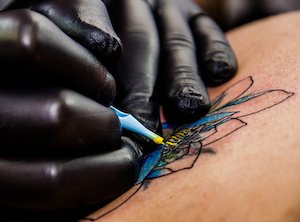 Tattooing Over Stretch Marks, Moles, Scars And Other Skin Conditions
Tattooing Over Stretch Marks, Moles, Scars And Other Skin Conditions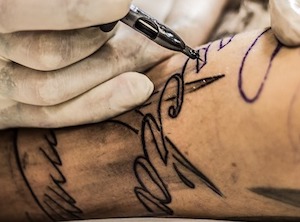 11 Best Fonts For Tattoos 2022
11 Best Fonts For Tattoos 2022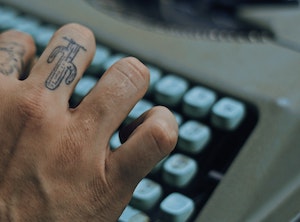 Advice For An Itchy Tattoo
Advice For An Itchy Tattoo
